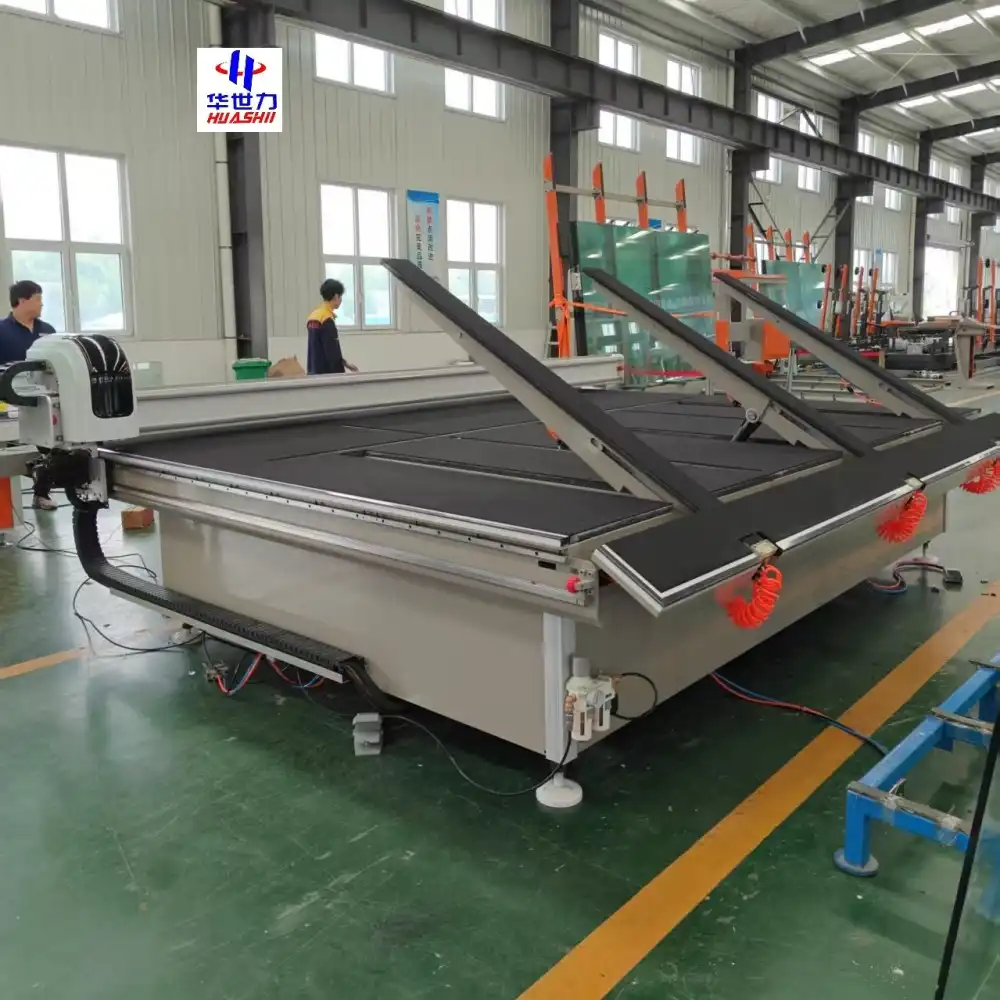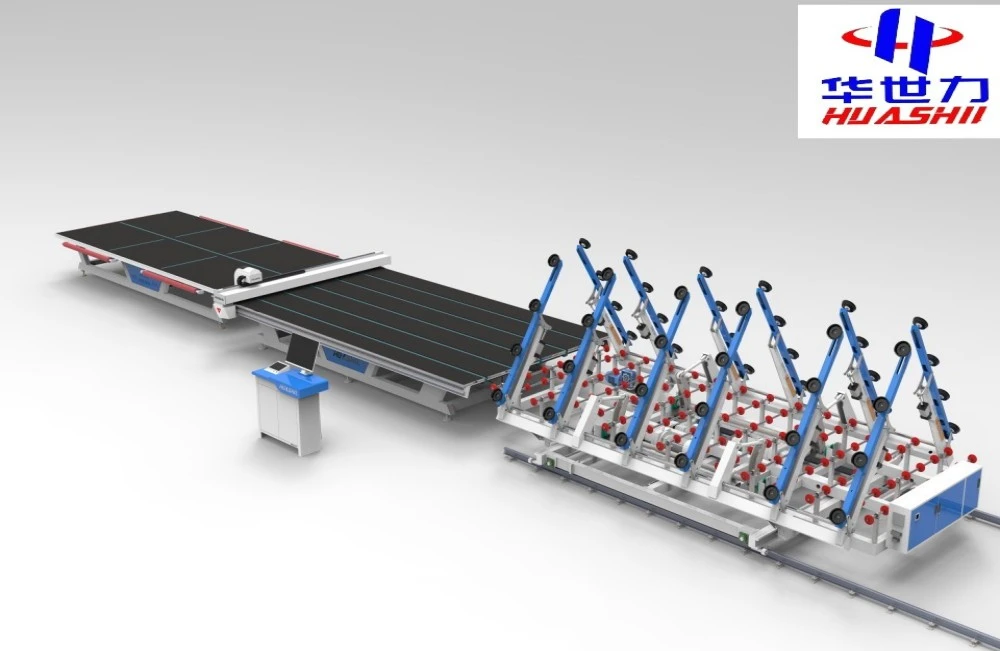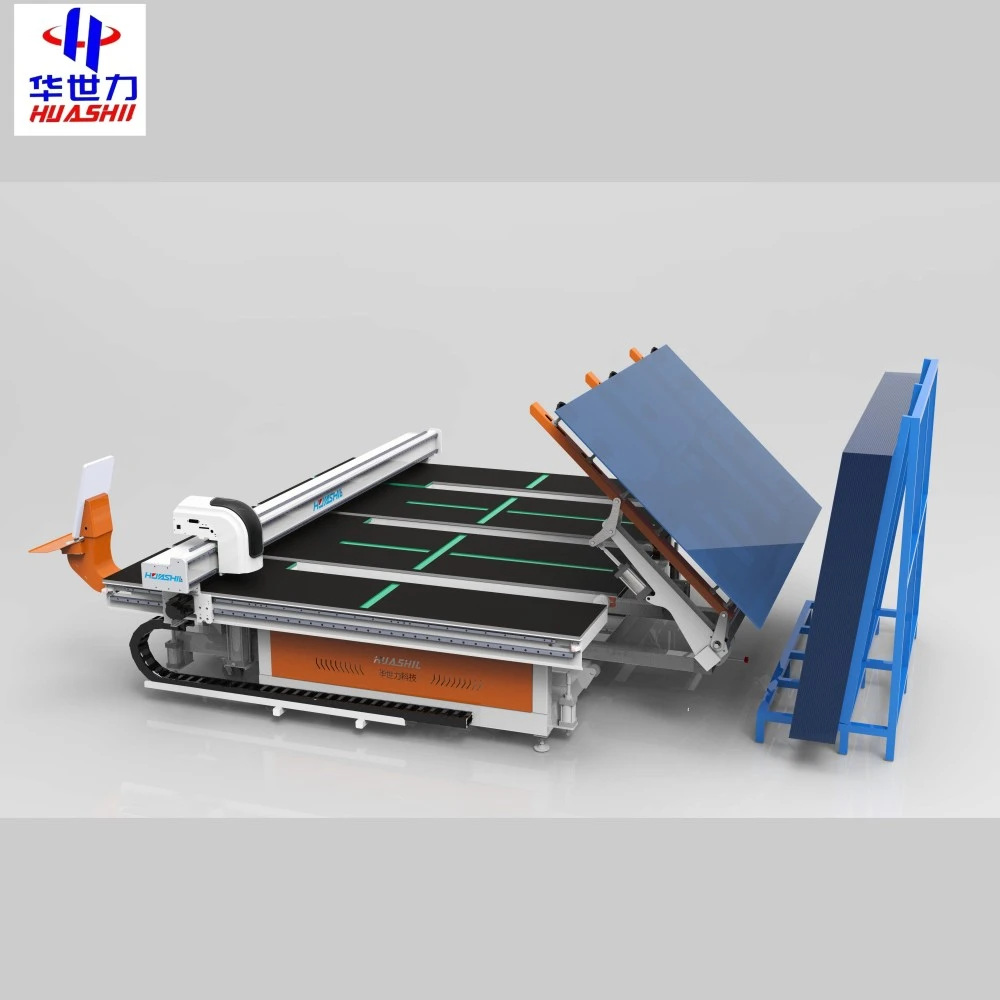In today's world, where sustainability and energy conservation are paramount, the glass manufacturing industry is no exception to the drive for more efficient processes. Integrated glass cutting machines have emerged as a game-changer in this sector, offering not only precision and speed but also significant energy savings. This article delves into the energy efficiency aspects of these cutting-edge machines, exploring how they're revolutionizing the glass production landscape.
Energy-saving modes in modern glass cutters
Modern integrated glass cutting machines are equipped with sophisticated energy-saving features that significantly reduce power consumption without compromising on performance. These innovative modes are designed to optimize energy usage during various stages of the cutting process.
One of the most notable energy-saving features is the intelligent standby mode. When the machine is not actively cutting, it automatically enters a low-power state, drastically reducing energy consumption. This mode ensures that only essential systems remain operational, while non-critical components are temporarily deactivated.
Another energy-efficient feature is the dynamic power adjustment system. This advanced technology allows the machine to modulate its power output based on the specific requirements of each cutting job. For instance, when cutting thinner glass or performing less demanding tasks, the machine automatically reduces its power consumption, leading to substantial energy savings over time.
Moreover, many modern glass cutters incorporate regenerative braking systems. These systems capture and store energy that would otherwise be lost during the deceleration of moving parts. This recaptured energy can then be reused, further enhancing the machine's overall energy efficiency.

The integration of high-efficiency motors and drives in these machines also plays a crucial role in energy conservation. These components are designed to operate at peak efficiency, converting a higher percentage of electrical energy into mechanical work, thereby reducing energy waste.
Additionally, advanced thermal management systems in these machines help maintain optimal operating temperatures with minimal energy expenditure. By efficiently regulating heat distribution and dissipation, these systems prevent overheating and reduce the need for energy-intensive cooling mechanisms.
Comparing electricity usage: Traditional vs. integrated
When it comes to electricity consumption, the difference between traditional glass cutting methods and integrated glass cutting machines is stark. Traditional methods, often relying on manual or semi-automated processes, tend to be energy-intensive and inefficient.
In conventional glass cutting setups, multiple machines are often required to complete various stages of the cutting process. Each of these machines consumes energy independently, leading to cumulative high power consumption. Moreover, the lack of advanced energy management systems in older equipment results in significant energy wastage during idle times and non-productive periods.
In contrast, integrated glass cutting machines consolidate multiple processes into a single, highly efficient unit. This integration not only streamlines the cutting process but also optimizes energy usage across all operations. The centralized control system in these machines ensures that energy is distributed judiciously, with each component receiving only the power it needs at any given moment.
A comparative analysis of electricity usage reveals that integrated machines can achieve energy savings of up to 30-40% compared to their traditional counterparts. This substantial reduction in energy consumption translates to lower operational costs and a significantly reduced carbon footprint.
The energy efficiency of integrated machines is further enhanced by their superior cutting accuracy. By minimizing errors and reducing the need for rework, these machines eliminate the energy waste associated with correcting mistakes or producing unusable pieces.
Another factor contributing to the lower electricity usage of integrated machines is their faster processing speed. By completing cutting tasks more quickly, these machines reduce the overall time that energy-consuming components need to be active, resulting in lower cumulative energy consumption per cutting job.
Furthermore, the advanced software systems in integrated machines allow for optimal job scheduling and resource allocation. This intelligent management ensures that the machine operates at peak efficiency throughout its operational hours, avoiding energy-wasting idle periods and unnecessary power-ups and shutdowns.

Eco-friendly glass cutting technologies
The quest for energy efficiency in glass cutting has led to the development of several eco-friendly technologies that are now being incorporated into integrated glass cutting machines. These technologies not only reduce energy consumption but also minimize environmental impact in various ways.
One of the most promising eco-friendly technologies in glass cutting is laser cutting. Unlike traditional mechanical cutting methods, laser cutting requires no physical contact with the glass, reducing wear and tear on machine components and minimizing the need for lubricants. Laser cutting systems in integrated machines are highly precise and energy-efficient, capable of making intricate cuts with minimal energy input.
Water jet cutting is another environmentally friendly technology gaining traction in the glass industry. This method uses a high-pressure stream of water, sometimes mixed with abrasive particles, to cut glass. Water jet cutting systems integrated into modern machines offer several environmental benefits, including reduced dust production and lower noise levels compared to traditional cutting methods.
Advanced CNC (Computer Numerical Control) systems in integrated machines contribute significantly to eco-friendly glass cutting. These systems optimize cutting paths and material usage, reducing waste and energy consumption. By maximizing the use of each glass sheet and minimizing offcuts, CNC-controlled cutting helps conserve raw materials and the energy required to produce them.
The integration of IoT (Internet of Things) technology in glass cutting machines is another step towards eco-friendliness. IoT-enabled machines can collect and analyze data on energy consumption patterns, allowing for continuous optimization of energy usage. This data-driven approach helps identify areas of inefficiency and implement corrective measures in real-time.
Moreover, some cutting-edge integrated machines are now incorporating renewable energy sources. For instance, solar panels can be installed to power certain machine components or to supplement the main power supply, reducing reliance on grid electricity and further lowering the carbon footprint of glass cutting operations.
The use of eco-friendly coolants and lubricants in these machines also contributes to their overall environmental performance. Biodegradable and non-toxic fluids are increasingly being used, minimizing the environmental impact of waste disposal and reducing the risk of harmful emissions during the cutting process.
Another innovative feature in modern integrated machines is the incorporation of energy recovery systems. These systems capture and repurpose heat generated during the cutting process, which can be used for other purposes within the manufacturing facility, such as space heating or preheating glass sheets before cutting.
The development of ultra-thin cutting tools for integrated machines has also contributed to energy efficiency. These tools require less force to cut through glass, reducing the overall power demand of the cutting process. Additionally, their precision allows for narrower cut widths, maximizing material utilization and reducing waste.
Advancements in glass composition and treatment technologies are also playing a role in eco-friendly cutting. New types of glass that are easier to cut or require less energy to process are being developed, complementing the capabilities of integrated cutting machines and further reducing energy requirements.

Conclusion
The evolution of integrated glass cutting machines represents a significant leap forward in energy efficiency and environmental sustainability for the glass manufacturing industry. By combining advanced technologies, intelligent energy management systems, and eco-friendly cutting methods, these machines are setting new standards for energy conservation and operational efficiency.
As the industry continues to innovate, we can expect to see even more advanced features and technologies that further reduce energy consumption and environmental impact. The future of glass cutting lies in machines that not only deliver precision and speed but do so with minimal energy footprint.
For businesses in the glass manufacturing sector, investing in these energy-efficient integrated machines is not just an environmentally responsible choice but also a smart business decision. The long-term cost savings from reduced energy consumption, coupled with increased productivity and reduced waste, make these machines a valuable asset for any forward-thinking glass production facility.
At Shandong Huashil Automation Technology Co., LTD, we understand the importance of energy efficiency in glass manufacturing. Our state-of-the-art integrated glass cutting machines are designed to meet the highest standards of energy conservation while delivering unparalleled performance and precision. With years of experience in automated R&D, manufacturing, and sales of mechanical equipment, we offer cutting-edge solutions that cater to the diverse needs of the global glass industry.
If you're looking to upgrade your glass cutting operations with energy-efficient, high-performance machines, we invite you to explore our range of innovative solutions. Our team of experts is ready to assist you in finding the perfect integrated glass cutting machine for your specific requirements. Contact us today at salescathy@sdhuashil.com to learn more about how our advanced technology can transform your glass cutting processes, boost your productivity, and contribute to a greener future.
References
1. Johnson, A. (2022). "Advancements in Energy-Efficient Glass Cutting Technologies". Journal of Sustainable Manufacturing, 15(3), 187-202.
2. Smith, B., & Brown, C. (2023). "Comparative Analysis of Traditional and Integrated Glass Cutting Methods: Energy Consumption and Environmental Impact". International Journal of Industrial Engineering, 28(2), 301-315.
3. Lee, D., et al. (2021). "Eco-Friendly Innovations in Modern Glass Cutting Machinery". Green Technology Review, 9(4), 455-470.
4. Garcia, M., & Rodriguez, L. (2023). "The Role of IoT and Data Analytics in Optimizing Energy Efficiency of Glass Manufacturing Processes". Smart Factory Journal, 12(1), 78-93.



